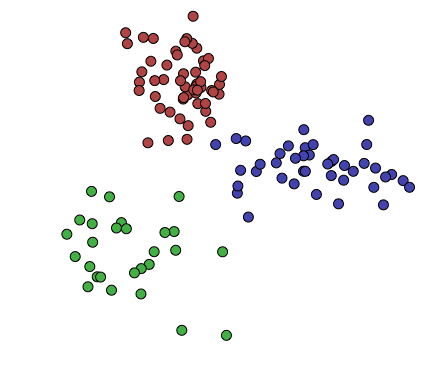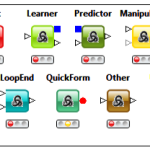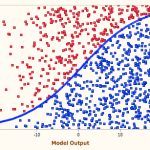Classification & Clustering Algorithms

A famous dialogue you could listen from the data science people. It could be true if we add it’s so challenging at the end of the dialogue. The foremost challenge starts from categorizing the problem itself. The first level of categorizing could be whether supervised or unsupervised learning. The next level is what kind of algorithms to get start with whether to start with classification algorithms or with clustering algorithms?
As we have covered the first level of categorizing supervised and unsupervised learning in our previous post, now we would like to address the key differences between classification and clustering algorithms. First of all, it’s better to know the differences between classification and prediction before knowing the difference between classification and clustering.
Now Let’s begin with classification concepts.
Classification Concept

Classification Concepts
In classification, the idea is to predict the target class by analysis the training dataset. This could be done by finding proper boundaries for each target class. In a general way of saying, Use the training dataset to get better boundary conditions which could be used to determine each target class. Once the boundary conditions determined, the next task is to predict the target class as we have said earlier. The whole process is known as classification.
Target class examples:
- Analysis the customer data to predict whether he will by computer accessories (Target class: Yes or No)
- Gender classification from hair length (Target classes: Male or Female)
- Classifying fruits from each fruit feature like colour, taste, size, weight (Targe class: Apple, Orange, Cherry, Banana)
Let’s understand the concept of classification with gender classification using hair length. To classify gender (target class) using hair length as feature parameter we could train a model using any classification algorithms to come up with some set of boundary conditions which can be used to differentiate the male and female genders using hair length as the training feature. In gender classification case the boundary condition could the proper hair length value. Suppose the differentiated boundary hair length value is 15.0 cm then we can say that if hair length is less than 15.0 cm then gender could be male or else female.
Some classification algorithms listed below.
Classification Algorithms
- Linear classifiers
- Logistic regression
- Naive Bayes classifier
- Fisher’s linear discriminant
- Support vector machines
- Least squares support vector machines
- Quadratic classifiers
- Kernel estimation
- k-nearest neighbor
- Decision trees
- Random forests
- Neural networks
- Learning vector quantization
Application of Classification Algorithms
- Email spam classification
- Bank customers loan pay bank willingness prediction.
- Cancer tumour cells identification.
- Sentiment analysis.
- Drugs classification
- Facial key points detection
- Pedestrians detection in an automotive car driving.
Clustering Concept

Clustering
In clustering the idea is not to predict the target class as like classification , it’s more ever trying to group the similar kind of things by considering the most satisfied condition all the items in the same group should be similar and no two different group items should not be similar. To group the similar kind of items in clustering, different similarity measures could be used.
Group items Examples:
- While grouping similar language type documents (Same language documents are one group.)
- While categorising the news articles (Same news category(Sport) articles are one group )
Let’s understand the concept with clustering genders based on hair length example. To determine gender, different similarity measure could be used to categorise male and female genders. This could be done by finding the similarity between two hair lengths and keep them in the same group if the similarity is less(Difference of hair length is less). The same process could continue until all the hair length properly grouped into two categories.
To get used to different similarity measure to perform clustering we have some popular clustering algorithms. Which are listed below.
Clustering Algorithms
Clustering algorithms can be classified into two main categories Linear clustering algorithms and Non-linear clustering algorithms.
- Linear clustering algorithm
- k-means clustering algorithm
- Fuzzy c-means clustering algorithm
- Hierarchical clustering algorithm
- Gaussian(EM) clustering algorithm
- Quality threshold clustering algorithm
- Non-linear clustering algorithm
- MST based clustering algorithm
- kernel k-means clustering algorithm
- Density-based clustering algorithm
Application of Clustering Algorithms
- Recommender systems
- Anomaly detection
- Human genetic clustering
- Genom Sequence analysis
- Analysis of antimicrobial activity
- Grouping of shopping items
- Search result grouping
- Slippy map optimization
- Crime analysis
- Climatology
Conclusion
Let’s summarize the key things we have learnt in this blog post.
Classification: Predicting target class for test dataset from the trained modeled from the training dataset.
Clustering: Using different similarity measure to place the all the similar items in a group.
Source: Dataaspirant

Kalyan Banga226 Posts
I am Kalyan Banga, a Post Graduate in Business Analytics from Indian Institute of Management (IIM) Calcutta, a premier management institute, ranked best B-School in Asia in FT Masters management global rankings. I have spent 14 years in field of Research & Analytics.








1 Comment
Chimes on KNIME - Fusion Analytics World
October 26, 2016 at 7:01 am[…] node has a type. It identifies the algorithm the node signifies. It specifies how to execute for different inputs and parameters, and what result we can expect. […]